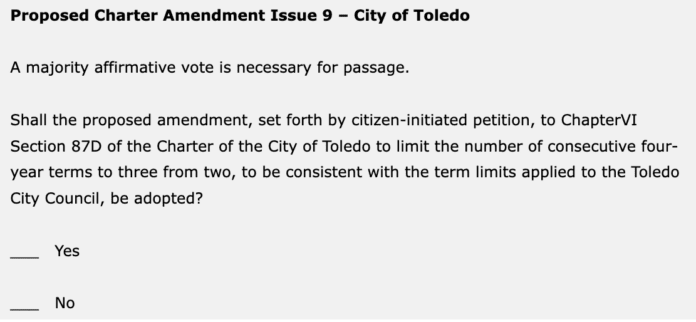Statehouse News: Ohio’s election
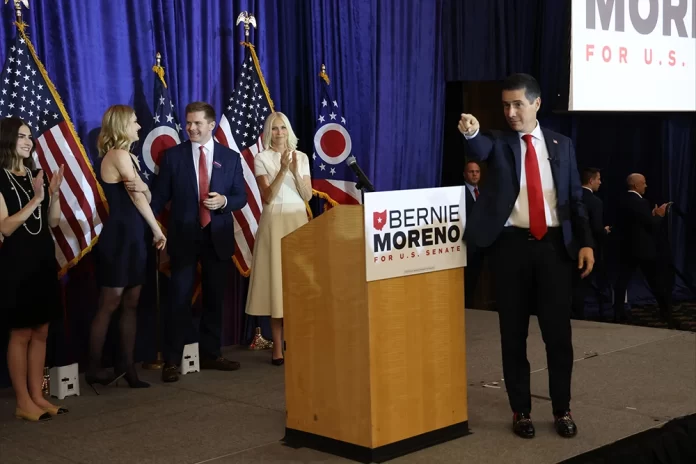

What happens with Vance’s seat, democratic party, ballot issues?
This story was originally published by Signal Statewide. Sign up for their free newsletters at SignalOhio.org/StateSignals.
By Andrew Tobias | Signal Statewide

There are plenty of follow-up angles to Nov. 5’s historic presidential election, suffice to say. But then there’s a big, pressing Ohio one – JD Vance’s election as vice president leaves Gov. Mike DeWine with a very important decision.
Here’s more on that and on other big, pressing political questions in the Buckeye State.
What happens to JD Vance’s seat?
Vance was elected to a six-year term in the senate in 2022, but he has to resign to become vice president sometime before Inauguration Day on Jan. 20. Under state law, governors have the authority to fill senate vacancies and are required to do so forthwith. Then, whomever DeWine appoints will have to run for election in 2026, including making it through the Republican primary. The winner then would have to run for a full term in 2028.
So whom might DeWine appoint?
DeWine has been tight-lipped on the topic. But he’s laid out his general criteria: He wants his pick to reflect his own views on politics, and he wants the person to be able to get elected in 2026. These two factors look as mutually exclusive as ever. In case you’re wondering where DeWine ranks in Trump World these days, former Fox News host Tucker Carlson called the governor a “midget” a few days ago to the delight of a room full of GOP voters.
One person I’m watching here is wealthy Columbus-area entrepreneur Vivek Ramaswamy. Not that I think it’s necessarily likely that DeWine will choose him. But he will have to choose whether NOT to appoint him. Ramaswamy openly lobbied for the Senate job at the Republican National Convention in July and appeared as a guest at an event hosted by Lt. Gov. Jon Husted, who used the RNC to network for his campaign to succeed DeWine in 2026.
Picking Ramaswamy would solve a political problem for Husted – whom DeWine wants to help become governor – by ensuring that the businessman won’t run for governor in 2026, never mind that Ramaswamy hasn’t specifically said he might run for the job. Ramaswamy also is more in line with where the Republican Party is today and is popular with Trump’s base. Ramaswamy recently announced that his investment company is moving to Texas but he is personally remaining in Ohio.
(Update: President-elect Donald Trump announced Tuesday that Elon Musk and Vivek Ramaswamy will lead a new “Department of Government Efficiency)
The reasoning may seem convoluted, but politicians think this way.
Another name to watch is Jane Timken, a former Ohio Republican Party chair who now represents Ohio in the national Republican National Committee. She would be the first woman to represent Ohio in the U.S. Senate if she were appointed, which I think would appeal to DeWine’s sense of wanting to make a mark in state history.
She’s also a Trump political ally, arguably giving her some electability in a GOP primary. But she ran near-last in the 2022 Senate primary. She also failed to get a possible endorsement from Trump because she did not forcefully defend Trump after the U.S. House voted to impeach him in January 2021 with support from a few Republicans.
I personally think DeWine is less likely to consider Secretary of State Frank LaRose or state Sen. Matt Dolan, who both ran for the Republican Senate nomination in March and lost. But both frequently are mentioned by the people who talk about these things.
Finally, DeWine could surprise us and look at someone from his inner circle. He passed over some Republicans lobbying for a vacancy on the Ohio Supreme Court in November 2022 by appointing Joe Deters, who was a Hamilton County prosecutor with no judicial experience.
What is the future of the Ohio Democratic Party?
It seems like every election cycle since 2014 has marked a new bottoming out for Ohio Democrats.
Yet they still haven’t found the bottom.
Trump won Ohio by double digits on Tuesday – expanding on his 2016 and 2020 margins. Three of the four remaining statewide Democratic officeholders lost their seats – Justices Michael Donnelly and Melody Stewart and longtime Sen. Sherrod Brown, who lost to businessman Bernie Moreno. Issue 1, the redistricting reform amendment, also failed, and although it wasn’t a Democratic proposal per se, Democrats were definitely pulling for it to pass.
It’s hard to see right now, but 2026 could give state Democrats a chance to rebuild.
Ruling political parties typically see a national backlash in off-year elections. And Democrats have won in other red states. Kansas and Kentucky both saw Democratic governors reelected in the last few years. The governor’s seat will be open, which means Democrats won’t have to try to defeat a well-known incumbent.
So there’s no theoretical reason why Democrats couldn’t compete in Ohio. They just need some good candidates. Although that’s kind of like saying the Cleveland Browns just need a quarterback.
I have a hot take: Brown could run for governor. Or he could try to run for the Senate, challenging whomever Republicans nominate. I have no specific reason to think he’ll do this. But Brown didn’t sound to me like he was done with politics when he gave his concession speech on Tuesday night.
I just don’t think it’s a crazy idea. And it might be the best shot Democrats get for a while.
Another potential candidate, Ohio House Minority Leader Allison Russo, made a point to address reporters Tuesday night after the Ohio Democratic Party’s Election Night event hastily ended following Brown’s concession. She touted Democrats’ success in Franklin County, where they flipped the county’s remaining Republican-held state legislative seats, as something the party might be able to build on in the future.
But she also said she hadn’t yet digested or processed where exactly Democrats went wrong nationally.
“Clearly we need to work on what it means to voters about who Democrats are,” Russo said. “But we win on the issues. There’s no doubt about that.”
What happens with ballot issues in Ohio?
Democrats and Republicans thought Issue 1 might pass on Tuesday. But it failed by around eight percentage points. The result was a victory for Republicans, who managed to win a round after losing twice last year, including the November 2023 vote to enshrine abortion rights in Ohio’s constitution. Groups on both sides believed Republican-drawn ballot language played a key role in getting voters to defeat Issue 1, although the “yes” campaign took it further by saying the language was the only reason it failed.
I’m wondering if the defeat will cause the deep-pocketed liberal groups who propose and bankroll ballot issues in states across the country to reevaluate whether to invest in Ohio again. Something similar happened after a drug liberalization measure failed here in 2018 and then after Trump won for a second time in 2020.
On the other hand, Missouri voters approved an Ohio-esque abortion-rights measure and a joint $15 minimum wage / mandatory sick time measure on Tuesday night. It’s not hard to see wage and sick time measures passing in Ohio. Nebraska voters also approved a similar sick-time issue with 74% of the vote.
But maybe the loss will cause the groups to think twice about funding more wide-ranging changes that would upend Ohio’s political system and threaten the Republican power structure here, like redistricting reform or ranked-choice voting.
Or maybe they’ll just try them in an off-year, when it will be harder to politicize the measures without a presidential race on the ticket.
Signal Statewide is a nonprofit news organization covering government, education, health, economy and public safety.
RELATED CONTENT
Mammograms of today: ‘Not like your mother’s’
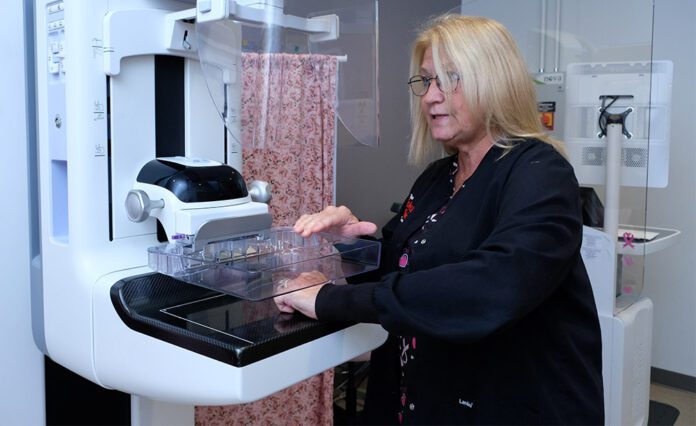

Toledo Clinic Women’s Center leads with compassion, comfort


MAUMEE – Have you ever received flowers after attending your first preventative appointment at a healthcare facility? You will at the Toledo Clinic’s satellite locations in Maumee and Toledo on Secor Rd.
The Toledo Clinic Women’s Center houses a dedicated and empathetic staff who have cultivated a soothing environment for mammography, an X-ray imaging technique that uses low-dose radiation to examine the breast for cancer and other diseases.
Their goal is to change the perception that mammography is scary and painful. But at this clinic, patients walk out with a sense of calm because of quick results and compassionate care.
We spoke with the staff at their Maumee location, where they took the time to tell us about their thorough and convenient imaging services and other conveniences this location provides.
It actually starts the moment you pull into the parking lot: There’s no parking garage, so parking lots are accessible, surround the building and are a short walk to the door. When you enter the facility, the imaging center is close to the entrance and easy to find. And walk-ins are welcome only at the Maumee location.
Mammography has come a long way in the past few years. Toledo Clinic’s Maumee location houses one 3D Digital Breast tomosynthesis high-definition mammogram unit. Imaging has updated from 2D to 3D.
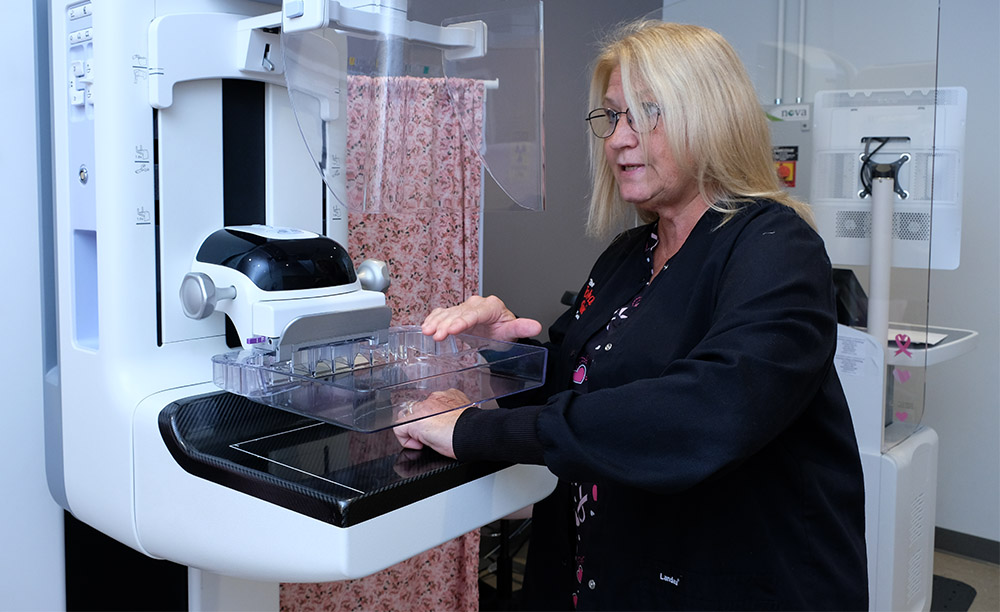

Denise Benton R.T. (R) (CT) (MR) (M), of The Toledo Clinic, said she loves coming to work because of the team and patients she works with. “Patients say they prefer coming here than anywhere else; I hear that all the time.”
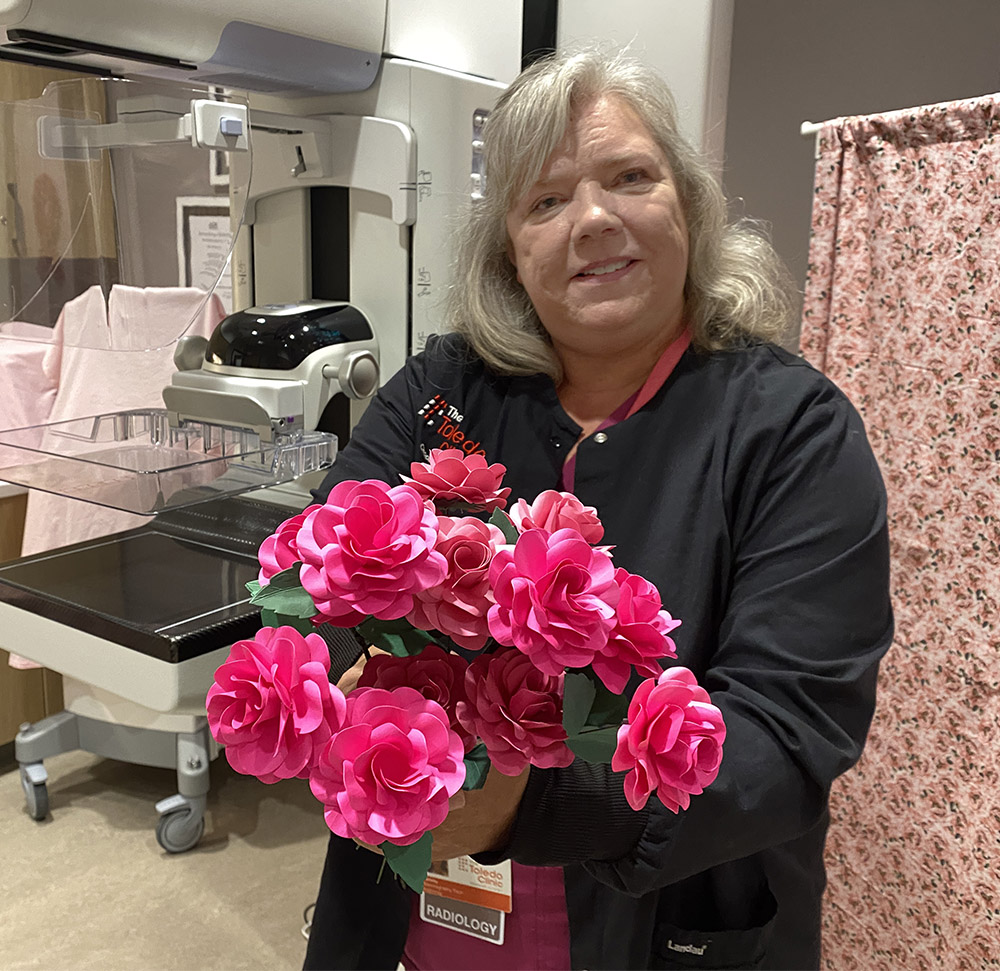



Benton describes the progression of these tests as dramatically changing the landscape of mammography. 2D images were like finding a bunny in a snowstorm, whereas 3D is more like taking a loaf of bread and slicing it into sections that can be thoroughly examined. Early detection is vital for patients, making cancer easier to treat.
The improvement of this technology has saved countless lives. The best way to keep yourself ahead of the game is to have yearly mammogram appointments. The Toledo Clinic’s cozy experience will encourage you to come back every year.
Benton ends every appointment with “I’ll see you next year!” She and the other staff members at the women’s clinic know the importance of what they do, which is why they have taken many thoughtful steps to make women comfortable and take their preventative care seriously.
Tammy Rosenbalm, a mammography technologist at the Toledo Clinic, has added an extra touch to help the first-time patients feel comfortable and appreciated. She makes paper flowers as a welcome gift. When asked about what inspired her to make the roses, she said it helps reduce the anxiety patients have over their screening mammograms.
“I hope giving them roses will help them to think of these appointments as a positive experience,” Rosenbalm said.
Appointments and walk-ins will start with a script from your physician. The staff at the Women’s Center will need this script to get you booked. Scheduled appointments are available, and walk-ins (only at the Maumee location) are encouraged during their hours: Monday-Friday from 8 a.m. to 4 p.m. Mammograms are offered at their two imaging locations. The other imaging center is at the Toledo Clinic Secor location.
The first step of a mammogram will take you into a room draped with pink florals. Unsightly medical equipment are hidden with drapes, crafty décor and images of flowers. Patients can choose a warm or cool gown. The ambiance is heightened by smooth jazz.
First time mammogram patients are treated with the utmost care. They are told that the mammo will not be like your “mother’s mammogram.”
Unlike what women experienced in generations past, the Toledo Clinic’s equipment is forgiving. The flexible paddle used to press your breast for imagery considers the shape of the individual breast, and does not push it down flat. Instead, it applies pressure in the appropriate areas, making for a much more comfortable experience and a better image.
If there is any abnormality found, you will be notified of the results within 24 hours. The clinic will schedule a diagnostic mammogram and an ultrasound. The radiologist will then discuss the results with you. If a biopsy is needed, it can be scheduled before you leave.
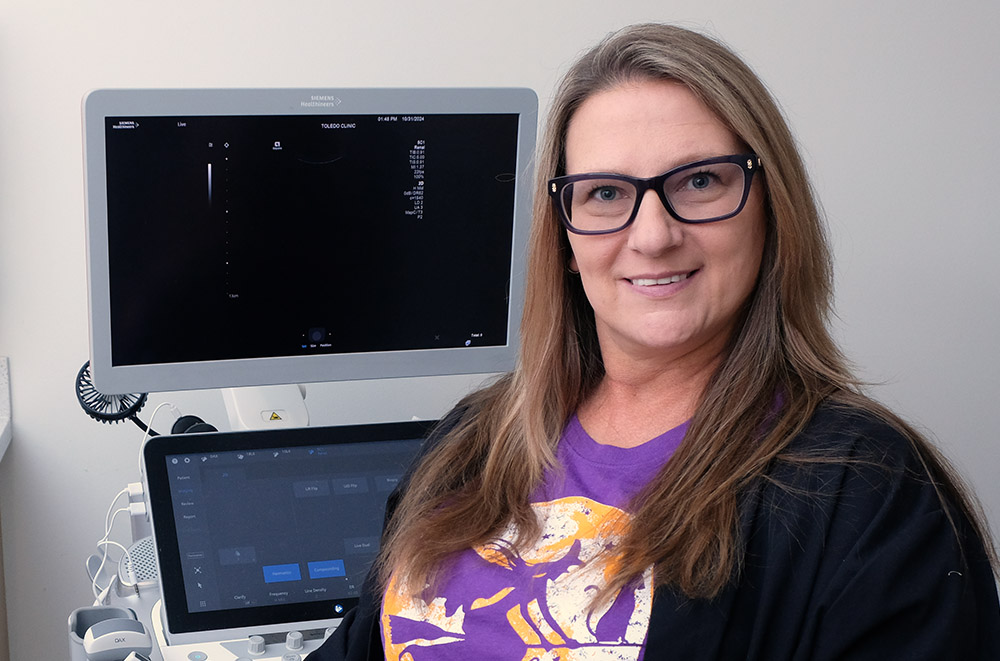

We spoke with one patient who is also a staff member at the Maumee imaging clinic. Ruth Waddell, the Toledo Clinic’s lead ultrasound technologist, has been receiving mammograms at another facility for about 12 years. She said she like being a patient at this facility because of the comfort staff provides.
“Tammy makes me feel comfortable and at ease. They make you forget it’s a medical test,” she said.
In her last appointment, Waddell heard the dreaded words, “We found something.” She was scheduled for a diagnostic appointment immediately, and received another mammogram and an ultrasound. The results detected a cyst.
Mammography is a vital tool for early detection of abnormalities that can’t be found by touch or sight. The staff at the Imaging Center encourages women to schedule a mammogram every year starting at 40 old.
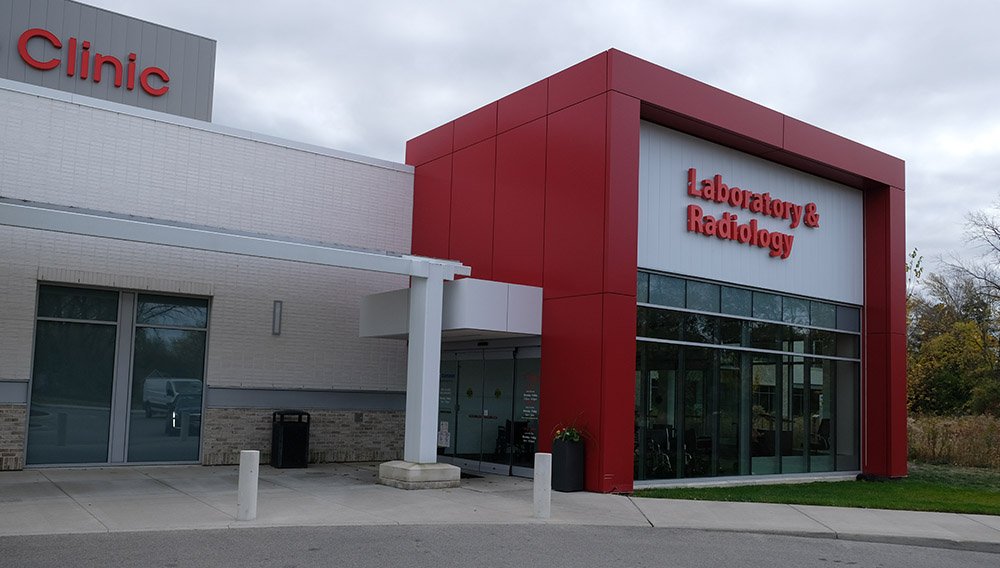

Humanity Against Hurricanes benefit
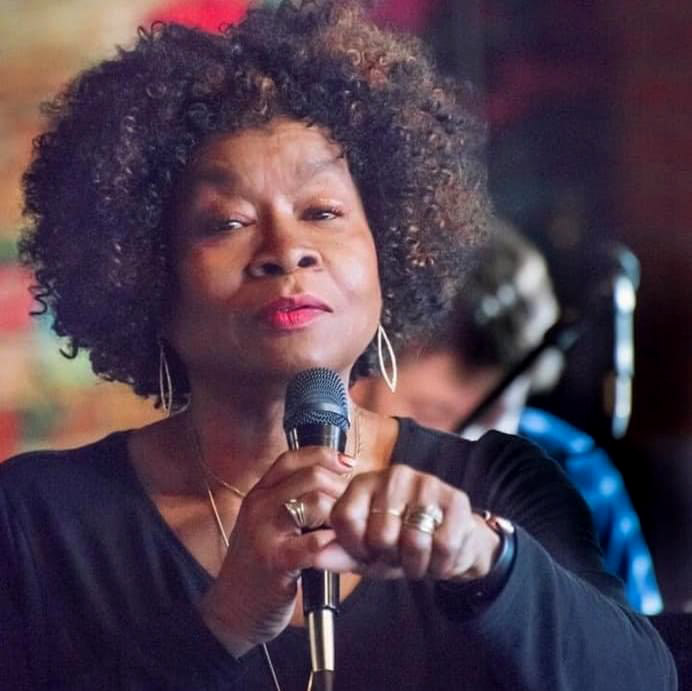

Four bars, dozens of musicians play for hurricane relief aid


On Nov. 17, more than two dozen bands will play among four area bars to benefit people the musicians don’t know in an area they’ve likely never been.
But there is one local person who knows the people and the area, which is why she’s spearheading this outpouring of support.
Dee Brown, a longtime fixture in the Toledo arts community, has organized the event, called Humanity Against Hurricanes. The goal is to raise money, supplies and various items for victims of Hurricanes Helene and Milton in Tarpon Springs, Fla.
“What I see now is 24 groups of musicians or soloists who are banning together to do something good for people they don’t even know,” she said.
On the same day, the Unitarian Universalist Church of Tarpon Springs and the Tarpon Springs Tattoo Co. will be open to assist those in need and recovering from the storms’ damage. Donations from the Northwest Ohio events will be delivered to the church after Thanksgiving.


How it began
It began with a simple suggestion. Brown said a musician friend recommended she put together a benefit for Floridians.
“He knows I organize a lot of events,” she recalled, “so I said, ‘Let’s do it.’ I was going to do just one, but then someone else was interested, and I wondered how many other places might be interested. Then I wondered if we can get the whole 419 involved.”
“I picked Tarpon Springs because I have family and friends there. I know how hard they got hit in both hurricanes,” Brown said. “People there are trying to help their neighbors. People lost everything.”
Even those who had next to nothing to begin with are in need. “The unhoused people had a place to go during the storm, but now they’re back out on the street. Every shelter they had is now gone,” Brown said.
“We’ll be working in the Hispanic and deaf communities, who were underwhelmed with assistance,” Brown said. Also to be aided are those who couldn’t escape the storm.
Brown connected with the church and the tattoo house, both of which agreed to accept the donations of money and items and distribute them to the needy.
What’s needed
Brown listed the following needed items: Building and cleaning supplies; personal care items; new shoes for children and adults, socks, underwear, blankets; cases of water; and gift cards to big-box stores.
“We need a box truck to take the supplies down there and get back, or a rental truck to get there and a rental car to drive back. We desperately need help with that,” Brown pleaded.
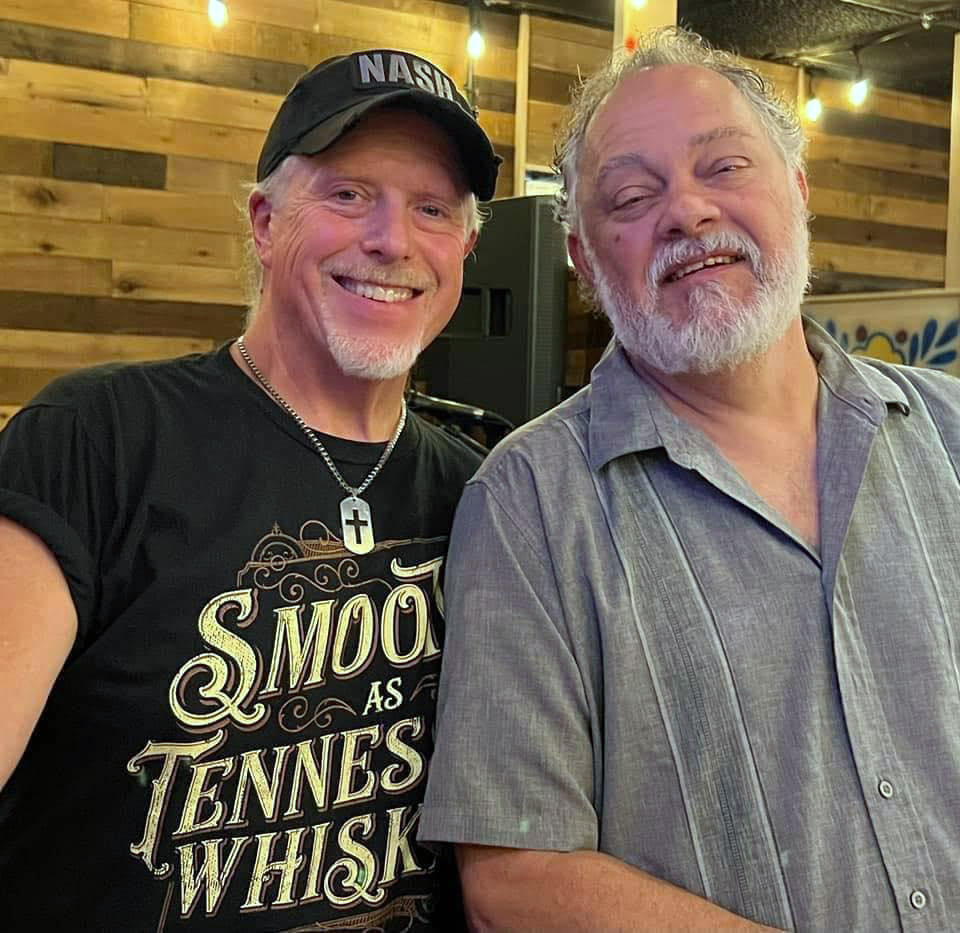

“My son and I are going to take the week off after Thanksgiving and drive the supplies down there. And I’ll personally be delivering supplies to some places, like 55-and-over sites. The church is helping us organize this.”
She added that they are asking for direct donations to the church with a notation that it’s for the hurricane fund. Details are available at Tarpon.
At the core of this event – free to attend – are the musicians donating their time and talent, as well as the host bars.
Tyler Householder said when his Brewing Green craft brewery was asked to be a venue, there were no second thoughts.
“It fits into what we’re trying to be in the community,” he said. Householder said Brewing Green regularly hosts local musicians and takes part in local benefit drives. This, though, is on a larger scale.
“We’re happy to be a part of something like this,” he said. “It’s testimony to the Northwest Ohio community in general.”
Brown agrees. “This is a supportive community. They really have your back. The 419 means a lot to my heart. Some people say bad things about it, but this is a beautiful place to be.”
Regarding Toledo, she added that “it’s a city full of music, a city full of art, a city full of love.”
Army medic returns home
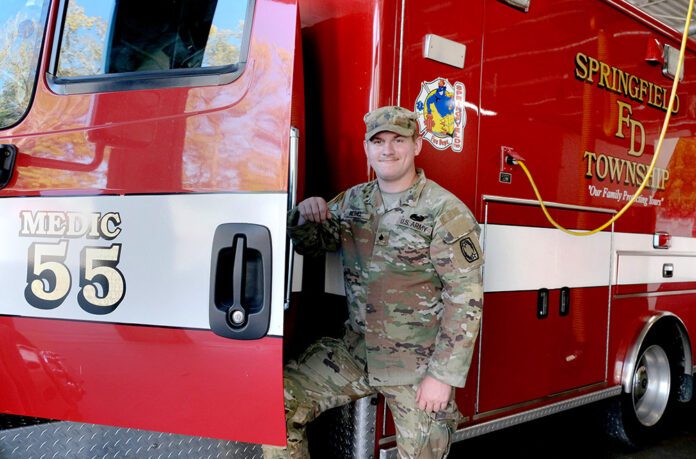

Springfield Township Fire & Rescue taps into army internship program
HOLLAND – Members of the U.S. army can often find it challenging to make the transition from military to civilian life, particularly when it comes to employment. To help ease that burden, the army created an individual internship program that partners soldiers with civilian companies.
Since 2013, the army’s Career Skills Program (CSP) has helped 49,965 soldiers complete one of the 226 CSPs, and has partnered with more than 4,000 employers to deliver a 93 percent hire rate.
Springfield Township Fire & Rescue has tapped into that program, which they hope will gain the department a well-qualified firefighter and medic.
That soldier is combat medic and emergency medical technician (EMT) Army Spec. Brian Bethel, 26, who joined the army in 2021 and is scheduled to be honorably discharged in January. Currently an active duty combat medic, Bethel has been interning with his local fire department since the first week in July.
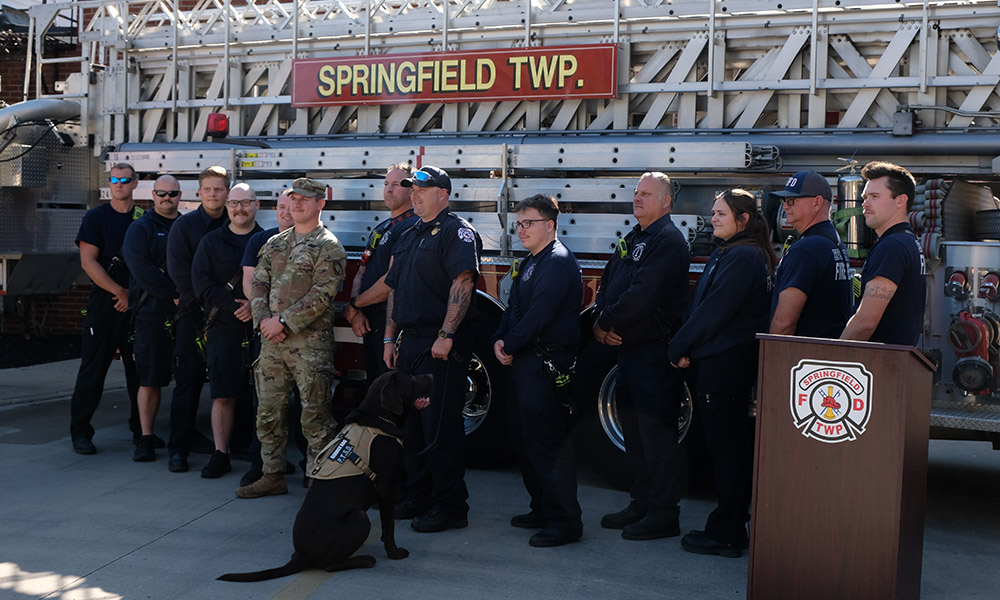

When his internship expires this month, he’ll return to his active duty station with the 144 Air Defense Artillery (ADA), 69th Brigade, at Fort Cavazos (formerly Ft. Hood) in Texas until his ETS (expiration term of service) date of Jan. 3.
“For now, this is my place of duty, and the army can check in with them (his supervisers) whenever they want to make sure I’m doing okay,” Bethel said. “It’s been so helpful to transition. I can’t thank enough to the department and to the army for allowing this to happen.”
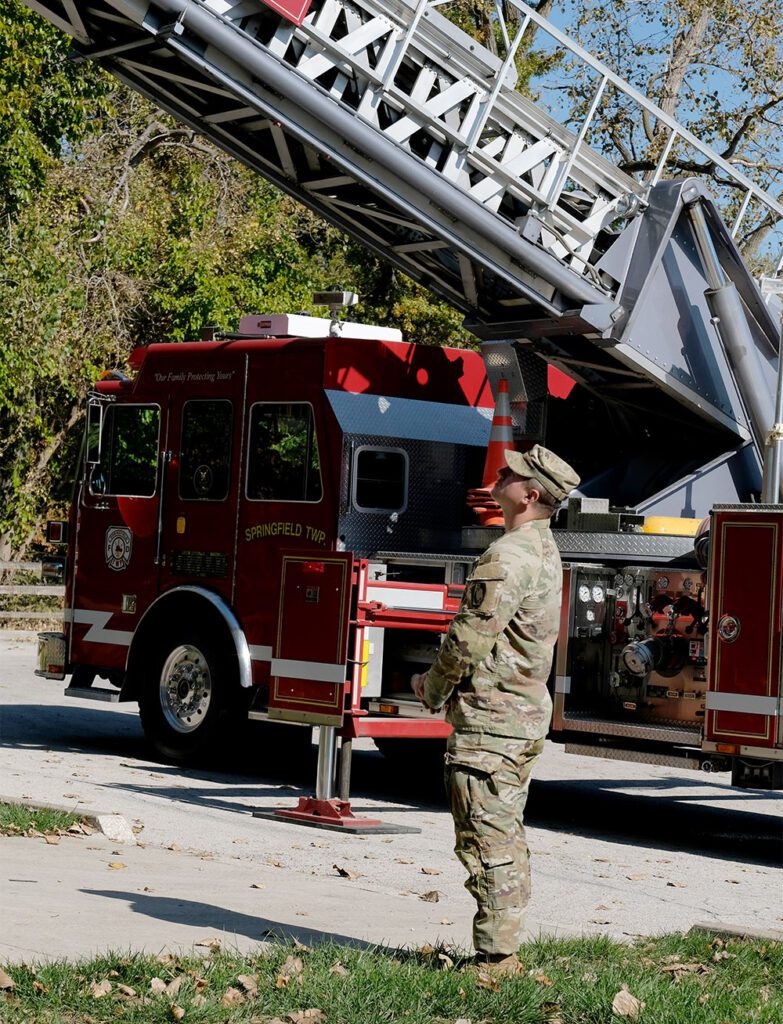

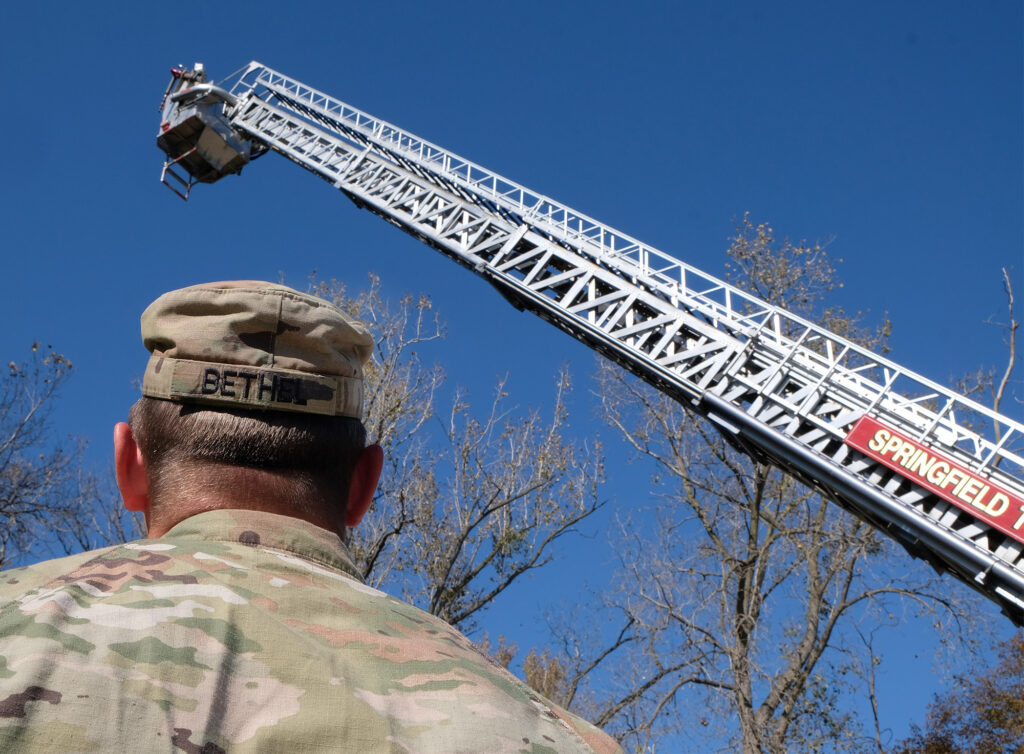

Over the past few months, Bethel said he’s learned about the department’s work schedules, how a fire department runs and “just how good Springfield Township fire department actually is.”
He said his goal is to learn what being a firefighter and EMT/paramedic entails. He’s already experienced in dealing with trauma as a combat media, and that has helped him with his civilian firefighter training.
Bethel said the program has been very helpful because he had no idea what being in the fire service or being a civilian was like. “This was a great way for me to transition from being an active duty soldier back to a civilian, where I don’t have to show up to PT (physical training) or chow,” he quipped.
Bethel said that everyday he’s proving his worth so he can hopefully come back and work for Springfield Township, where he grew up. He graduated from Springfield High School in 2017.
In addition to on-the-job training, he is also studying to become a paramedic at Owens Community College and taking the Firefighter 1 course at Penta Career Center. The Penta course is part of its short-term firefighter certification programs. Once he is certified, he can apply to work as a civilian firefighter.
Springfield Fire Chief Jonathon Ziehr described the CSP as a “phenomenal program that we should have been doing long ago,” adding that with a shortage of firefighter/EMTs, it’s a way to attract military veterans to the department.
Ziehr admitted the program does have its challenges. Similar to a college transfer, soldiers in the CSP find that the education they receive as a medic, for instance, does not necessarily transfer to EMT or fire certification. The chief said the military, along with federal, state and local government officials, need to work collectively to resolve the issue.
Administrator Mike Hampton hopes to continue the CSP at Springfield. “We see the career skills program as a catalyst to encourage many honorable discharged soldiers to gain additional education and workplace experience during their transition to civilian life.”
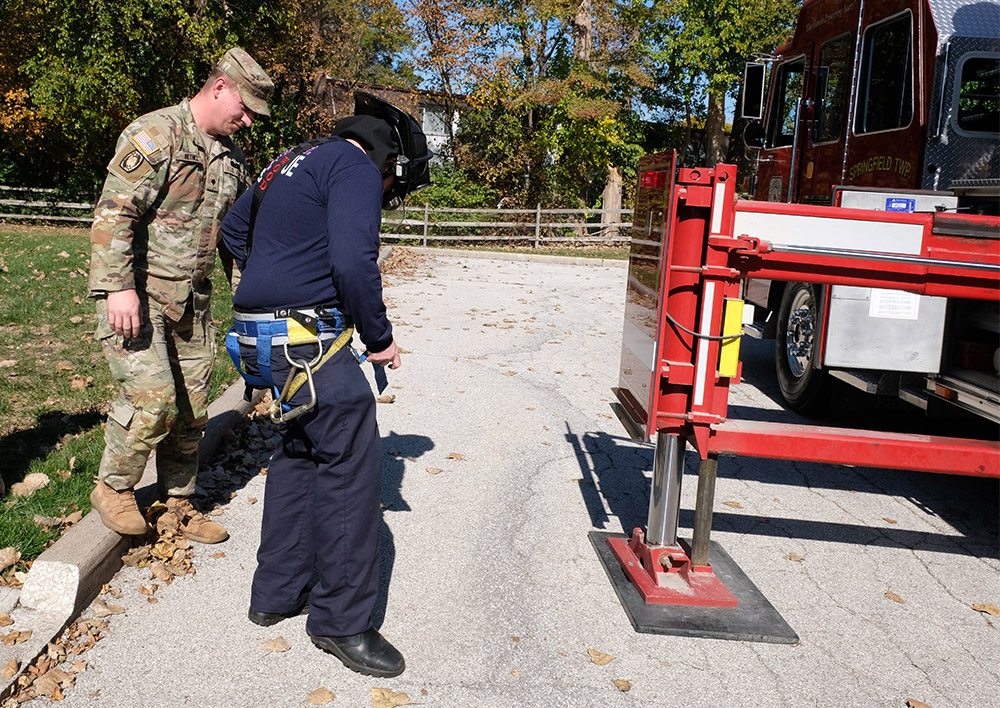

Bethel, who plans to join the national guard in November, comes from a line of siblings who served in the military, and he credits his brothers with helping him choose the army.
“My oldest brother was a marine, my second oldest has been a police officer for the last 16 years, and the third oldest was in the air force for six years and going on seven years in the guard, so having that around me pushed me in that direction,” he said. “But really, I just wanted to serve my country and Springfield Township, which has been the plan all along.”
He also credits his parents for how he was raised. “I just strive to be the best person possible, and I really found helping people, the community and my country is what I love to do.
As for his entering civilian life in a few months, he said he’s prepared. “I want to come back to serve my community. I love it and it makes me happy. That’s all I’m about – coming back to my community to serve and help them. That’s all I can ask for, to help one person a day.”
BGSU No. 1 for veterans
University best for veterans, military students in the midwest
BOWLING GREEN – For the fourth consecutive year, Bowling Green State University has been named the No. 1 university in the midwest for veterans and active military students, according to Military Times.
In its 2024 Best for Vets rankings, Military Times also placed BGSU No. 16 among public colleges and universities and No. 20 overall in the nation. BGSU has been consistently ranked by the publication as a top academic choice for veterans and active military students since 2013.
At BGSU, veteran and military students are empowered with comprehensive, personalized support in and out of the classroom. Through the BGSU Office of Nontraditional and Military Student Services, military-affiliated students can embrace dedicated tutoring services, join veteran and military-focused student organizations and discover resources for navigating their education during activations or other circumstances unique to military life.
Military Times’ Best for Vets rankings are based on an annual survey of colleges and universities nationwide to evaluate their veteran-focused programs and resources. Department of Education and Department of Veterans Affairs data are also analyzed for the rankings.
For this year’s rankings, Military Times prioritized student success as the most important factor in determining relative placements, underscoring the University’s commitment to student outcomes. The publication also considered the breadth of military-specific resources and financial assistance available to students among other factors.
BGSU also ranks No. 1 in Ohio as home to the best online bachelor’s degree programs for veterans, according to U.S. News and World Report.
Senior housing groundbreaking
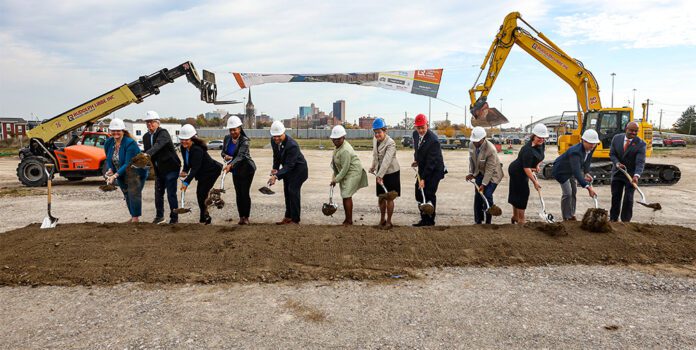

Collingwood Green V apartments becoming a reality
TOLEDO – A groundbreaking ceremony for 75-unit senior apartment complex called Collingwood Green V took place on last month at the corner of Nebraska Ave. and Division St.
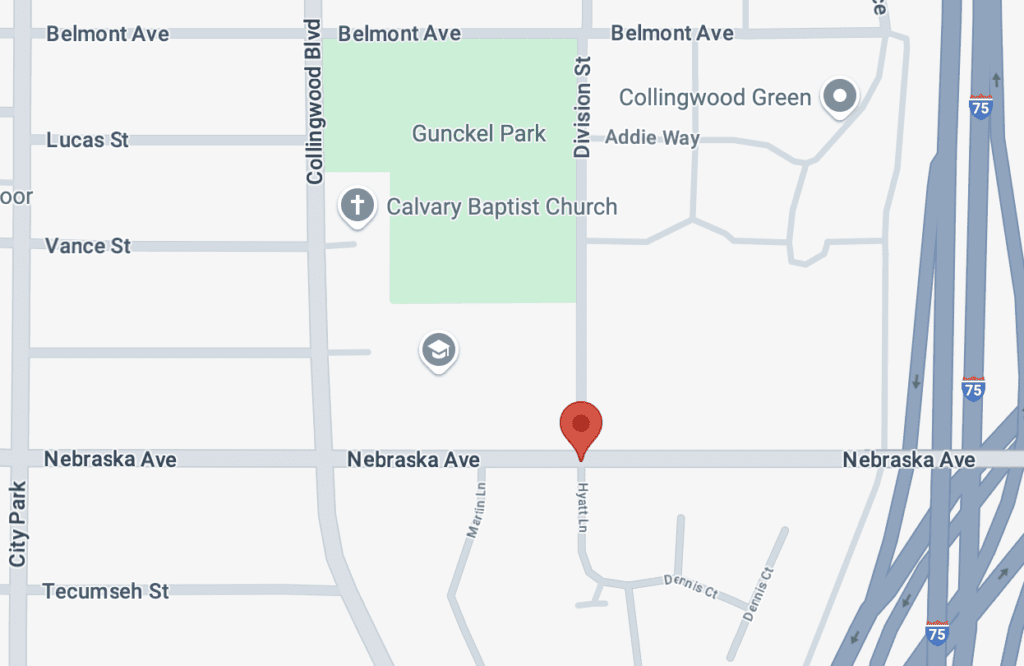

This effort comes after years of logistics, funding requests and collaboration involving a collection of nonprofits, businesses and agencies from local to federal. The City of Toledo, Lucas County, Lucas Metropolitan Housing, National Church Residences and Rudolph Libbe Group are the lead partners.
More than 50 people, including LMH staff, elected officials, other dignitaries and news media, attended the presentations and groundbreaking celebrating the housing project, which is aimed at seniors 62 and older who can thrive in independent living circumstances. It’s slated to open in 2026.
“This project is an example of what we can do when we work together,” said Rosalyn Clemens, Toledo Housing and Community development director.
“We’re going to renew possibility in this area so close to downtown,” added U.S. Rep. Marcy Kaptur, D-Ohio District 9, who was among the officials at the presentation.
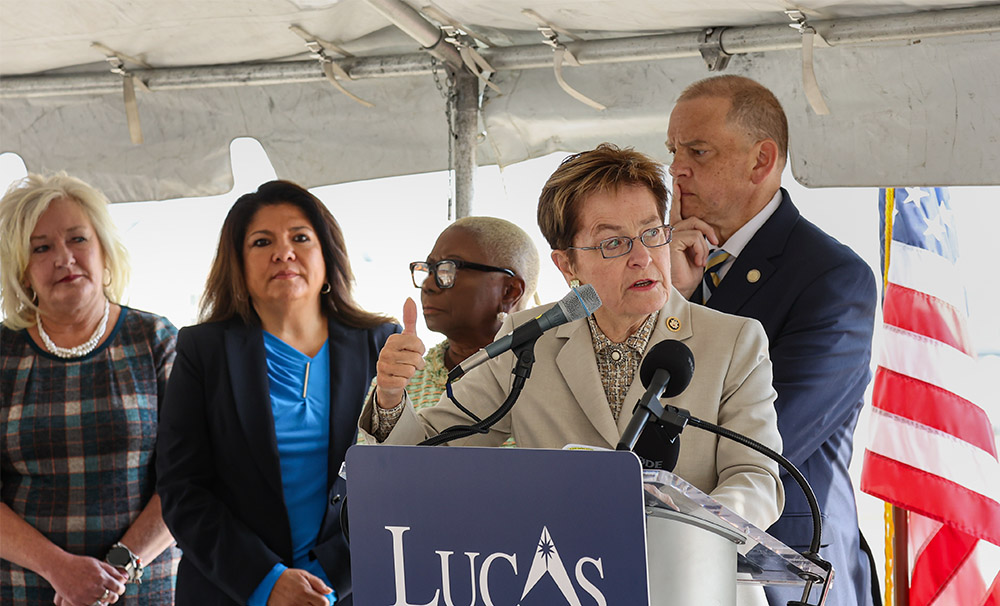

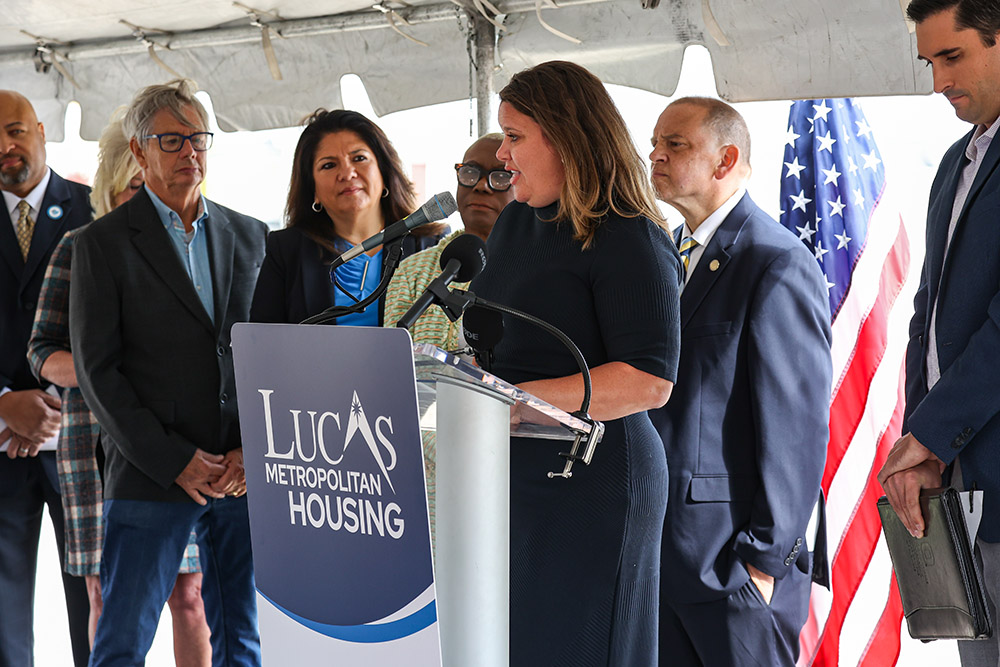

Funding for the $29 million development includes a total $6.7 million in federal American Rescue Plan Act funds, which were directed from City of Toledo and Lucas County Board of Commissioners authority. Union workers will be involved with the construction.
The Collingwood Green housing development replaces the long-demolished Brand Whitlock and Albertus Brown Homes sites. The Whitlock housing development was one of Toledo’s oldest public housing projects; some of those attending were familiar with the neighborhood and recalled the drab atmosphere.
“They had fallen into a state of disrepair,” described Toledo Mayor Wade Kapszukiewicz.
The Collingwood Green V project will feature 75 one-bedroom units, along with shared space. It adds to a redeveloped neighborhood that is already showcasing colorful exteriors and green space.
“LMH isn’t just building apartments. They are building a community,” said Lucas County commissioner Lisa A. Sobecki.
The reason to focus on seniors is the demographic and population trends in City of Toledo. The 2020 Census showed 14 percent of Toledo residents are 60 and older. The age 85 and older population is specifically increasing at a fast pace, according to the Area Office on Aging of Northwestern Ohio.
“We are living longer as Toledoans, and that’s a good thing,” Kapszukiewicz said.
That trend, however, has an impact on long-range community needs and services.
“Housing is the biggest expense for retirees,” said Bill Harris, immediate past board chair of the Area Office on Aging of Northwestern Ohio.
The speakers emphasized the goal of Collingwood Green V is to provide affordable housing.
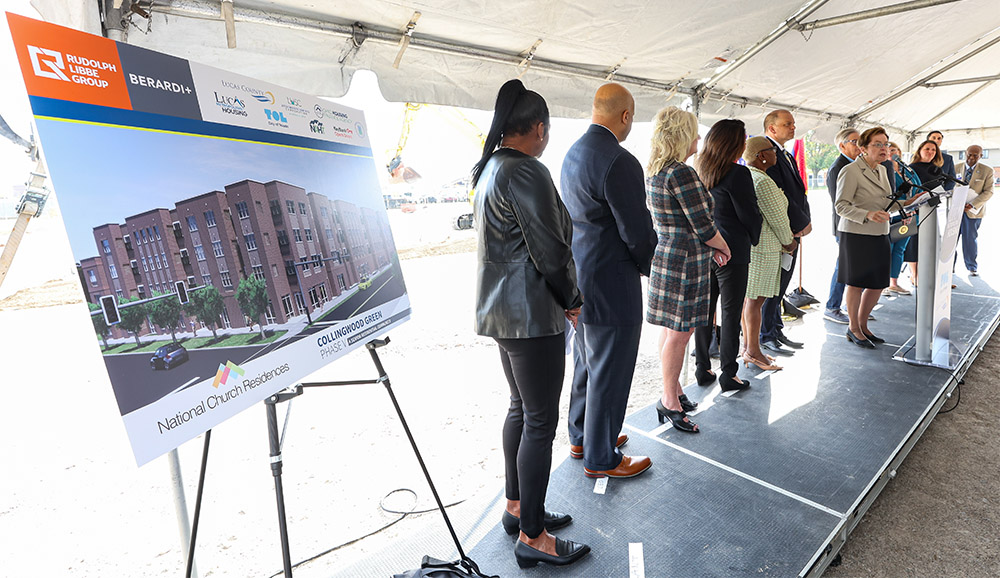

The phrase “affordable housing,” Clemens explained, goes beyond the traditional idea of public housing or Section 8 qualifications. Instead, it indicates that housing costs no more than 30 percent of someone’s income. Within that range, individuals and families are better able to afford other everyday expenses, such as car repairs.
“We are showing everyone that decent, safe and sanitary housing is vital for seniors,” said Brian Murray, U.S. Department of Housing and Urban Development Cleveland Field Office director.
Those eligible to live in the upcoming apartment units will be income at or below 80 percent of the Toledo Area Median Income, which is currently $48,650.
More specifically, 30 apartments are intended for seniors at or below 50 percent of the Toledo Area Median Income, which is currently $30,400.
Op-Ed: On Issue 9
Amendment adds third term for Toledo mayors
By Mark Sobczak
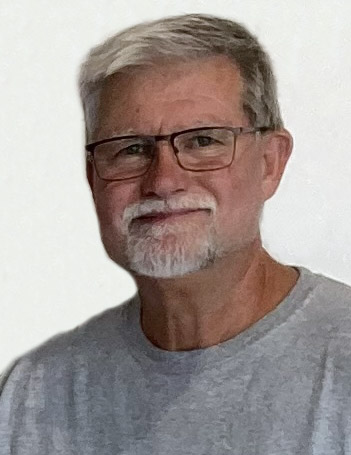

Hello, Toledo Free Press readers! Indulge me for a few lines to tell you a little about myself. I am a lifelong Toledoan. I grew up in a working-class neighborhood. Dad was a Toledo police officer and mom, after raising my three siblings and me, worked as a bank teller.
I am not a professional journalist, which will become painfully evident to the Free Press’ more discerning readers. I spent a 35-year career advocating for workers as an officer and business representative for Teamsters Local 20. I was elected as an at-large member to Toledo City Council and served from 2006 to mid-2009, and the last 18 months as city council president.
After retiring from the Teamsters, former Mayor Mike Collins asked me to serve in his administration as the commissioner of human resources for the City of Toledo. One year later, after his tragic and sudden death, then city council president Paula Hicks-Hudson became mayor by succession. Paula contacted me and asked if I would be willing to serve as her chief of staff and director of public safety.
I served for the next three years until current Mayor Wade Kapszukiewicz was elected. During my time as a city councilman, I became friends with Tom Pounds, editor/publisher of the Toledo Free Press. One very early Sunday morning while golfing together, he asked me a question about a City of Toledo water issue. Several holes later, when I felt I had sufficiently answered his question, he said, ‘Wow, you could write a book,” which was code for him seeking a much more succinct response. I realized my TMI moment and we shared a laugh.
But that got us thinking: I might be able to share some of my experiences as a city councilman and administrator with the Free Press readers. So, against that backdrop, I will endeavor to periodically regale the Free Press faithful with insights I have picked up along the way.
Signing the petition
When confronted by an obvious non-Toledoan while attending the Toledo Jeep Fest to sign the petition to put this proposed amendment on the ballot, I initially hesitated. Normally, I will sign just about any petition or accept any flyer/handout, sympathetic to the rejection invariably faced when interrupting someone’s day by asking them to sign or read something.
At first, I thought ‘No, I won’t sign.’ Then I thought, ‘Well, this is not a vote for Wade’s third term. He would still have to run again and win.’ Then I got to thinking about who are the future Mayor wannabes and whether they may be better or worse than what we currently have.
Proposed Charter Amendment Issue 9 – City of Toledo
A majority affirmative vote is necessary for passage.
Shall the proposed amendment, set forth by citizen-initiated petition, to ChapterVI Section 87D of the Charter of the City of Toledo to limit the number of consecutive four-year terms to three from two, to be consistent with the term limits applied to the Toledo City Council, be adopted?
___ Yes
___ No
The turnover on city council has been rapid as of late, with a few exceptions. Some of the new council members show potential as the city’s leader. Others not so much. But given four more years to demonstrate their acumen for city government, they may just fit the bill. I have often said there are two types of people who run for office: civil servants and self-servants. You can usually spot who is whom from a mile away. We currently have both.
Metaphorically speaking, it takes a new mayor about six months to find their parking space in the government center garage, meaning that time is usually lost to the inevitable transitioning that takes place with a new administration. At the time, I considered the options. Should the amendment pass, Wade will have an opportunity to make his case for what a third term would bring. Should the amendment fail, we lose an option that may have been best. That’s when I grabbed the clipboard and signed the petition.
Now that the results are in, we know that Issue 9 passed: 50,467 YES (55.37 percent) to 40,677 NO (44.63 percent) with 100 percent of precincts counted, which is unofficial until certified.
Wade has stated he will take advantage of the passage of Issue 9 and seek another term as mayor of the City of Toledo, but there hasn’t been an official announcement yet.
So, where are do we go from here? Can the mayor make a cogent case for a third term? Will a current city council member rise to the occasion? Will a local businessperson be willing to take the salary pay cut and jump into the fray? Will a dark horse emerge from the citizenry?
In a post-ARPA (American Rescue Plan Act) funds world, will it be status quo, utopia or an apocalypse? Time will tell. Whomever it is, their success will be the city’s success. As Gene Krantz, our American aerospace engineer heroically said, “Failure is not an option.”





